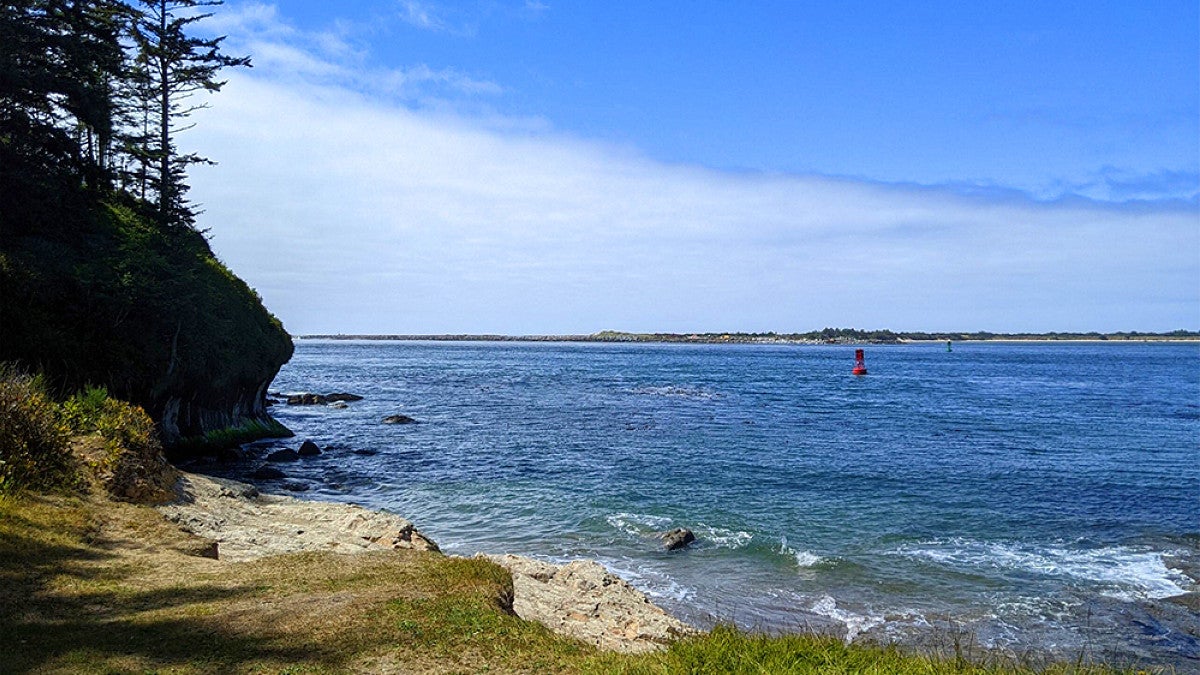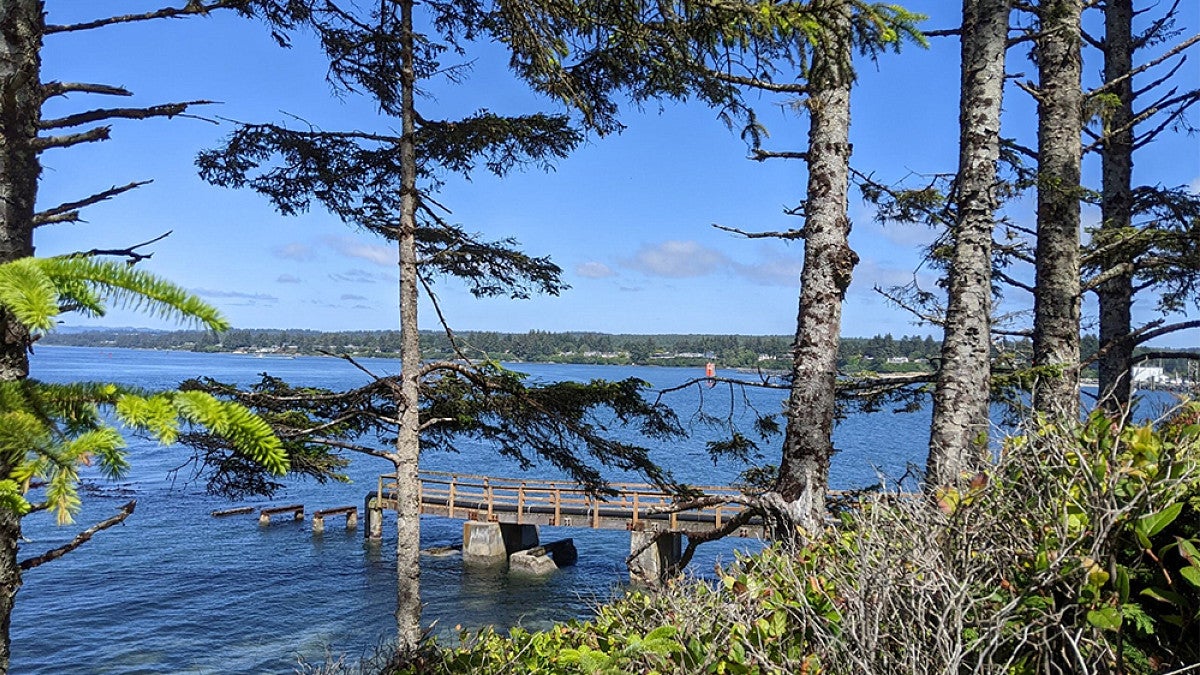
OIMB is located in the fishing community of Charleston on the Southern Oregon coast and offers access to an unusual range of habitat diversity.
All along the Oregon coast, the American Plate is over-riding the Juan de Fuca Plate. The resulting coastline is steep, with rugged sea cliffs and headlands leading sharply up to the Coastal Ranges. In contrast to the passive margin on the east coast of the United States, estuaries and sand beaches are not as common along the active margin of the west coast.

Life on the Estuary
OIMB’s position at the mouth of Coos Bay provides easy access to the wave-swept open coast, as well as protected estuarine habitats.
To the south, a typical west coast system of rocky headlands, rocky intertidal zones, and a few protected sandy coves are contained within State Parks. To the north, the Oregon Dunes System of high energy sandy beaches, shifting coastal dunes and permanent and temporary lakes extends for 40 miles and is protected as the Oregon National Dunes Recreation Area.
Coos Bay itself, like most west coast estuaries, is a drowned river mouth resulting from sea level rise following the end of the last ice age. It is the largest estuary entirely within Oregon and contains an extensive network of tidal channels, sand bars, mud flats, eelgrass beds, and salt marshes.
About an hour drive to the south is Cape Blanco State Park which contains the eponymous headland – the westernmost point in the state, and, arguably, in the contiguous United States, and a marine zoogeographic boundary. The best daylight low tides near Charleston are usually in the morning in spring and summer (lowest reaching about – 2.4 ft); the tidal amplitude is 10-11 ft.
South Slough National Estuarine Research Reserve
South Slough National Estuarine Research Reserve (SSNERR) was established near OIMB in 1974 as a 5,000 acre natural area that is dedicated to scientific research, long-term monitoring, and public education about estuaries and coastal watershed habitats.
Faculty members and students from OIMB played an instrumental role in the nomination and designation of SSNERR as the founding member of the national system of Reserves, and the SSNERR serves as an important focal point for collaboration between academic researchers, graduate students, and agency resource managers.
Coastal Forests
Offshore, a narrow continental shelf provides easy access to coastal waters that are characterized by a strong upwelling system with its associated nutrient-rich waters. The surrounding coastal forests include an 80-acre reserve within OIMB and a 5,000-acre reserve within the SSNERR.
The coniferous forest is dominated by Douglas fir, Sitka spruce, western red cedar and western hemlock, with an understory of salal and various huckleberry species. Ferns carpet the forest floor, and lichens drape the tree branches. Very little old growth remains in Coos County, but the OIMB reserve is approximately 70 years old, making it one of the oldest timber stands in the county.
Mild Climate
The climate is mild, with summer temperatures rarely exceeding 85 degrees F, and winter highs generally in the 40’s and 50’s. The prevailing winter winds are from the south and southwest, bringing warm, moist air to the region. Winter storms bring dramatic high winds and heavy rains. The summer is generally dry and cool, characterized by northwesterly winds and coastal upwelling. Coastal fog is common and ensures bountiful mushroom harvests in late summer and early fall.

